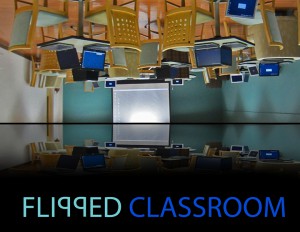 Each year the library is offered an opportunity to introduce PubMed to first year medical students. As we began planning this year’s session, we decided to use the opportunity to deliver the instruction in a different way. Innovative methods of instruction are often discussed within the library community, one of which is the idea of a “flipped classroom.” A flipped classroom is a model of teaching where the lecture is viewed by students prior to class. Class time is then used for other learning activities.1 According to Youngkin, implementing a flipped classroom in medical education can be more efficient, more flexible, and lead to improved performance.2
Each year the library is offered an opportunity to introduce PubMed to first year medical students. As we began planning this year’s session, we decided to use the opportunity to deliver the instruction in a different way. Innovative methods of instruction are often discussed within the library community, one of which is the idea of a “flipped classroom.” A flipped classroom is a model of teaching where the lecture is viewed by students prior to class. Class time is then used for other learning activities.1 According to Youngkin, implementing a flipped classroom in medical education can be more efficient, more flexible, and lead to improved performance.2
We did not want to require a pre-class assignment, so a few liberties were taken with the model. Step-by-step exercises were developed and students were given time to work through them in small groups. Each exercise focused on an important aspect of PubMed. Our goal was to limit the instructor interaction during this time to mirror the individual learning aspect of the model. Once the exercises were complete, students took turns teaching what they had learned to the entire class. This collaborative activity led to an increase in engagement between instructors and students.
Although the flipped classroom model was modified, the experience has been enlightening as we look for new and innovative ways of teaching. For an excellent article about flipped classroom design principles, read Kim’s “The Experience of Three Flipped Classrooms in an Urban University: An Exploration of Design Principles.”
For more information, contact Rose Turner at rlt@pitt.edu.
~Rose Turner
- Min Kyu Kim, So Mi Kim, Otto Khera, and Joan Getman, “The Experience of Three Flipped Classrooms in an Urban University: An Exploration of Design Principles.” The Internet and Higher Education, 22: 37-50, 2014.
- C. Andrew Youngkin, “The Flipped Classroom: Practices and Opportunities for Health Sciences Librarians.” Medical Reference Services Quarterly 33(4): 367-74, 2014.